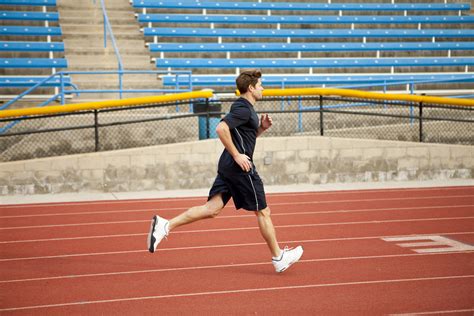The Core Challenge: Balancing Protection and Longevity
For every runner, the quest for the perfect shoe often boils down to two critical factors: injury prevention and durability. While some shoes excel in one area, finding a model that truly delivers on both can be a challenge. A shoe designed for ultimate cushioning might compromise on responsiveness or weight, while a minimalist, durable option might not suit everyone’s biomechanics for long distances. Understanding the intricate balance between these elements is key to making an informed choice that supports your running journey for the long haul.

Injury Prevention: More Than Just Cushioning
Injury prevention in running shoes is a complex interplay of design features tailored to support your foot’s natural motion and absorb impact. It’s not solely about how soft the shoe feels, but how it interacts with your unique biomechanics.
- Fit and Foot Type: The most crucial element. A shoe that doesn’t fit properly, regardless of its features, is an injury waiting to happen. Understanding your arch type (flat, neutral, high) and pronation pattern (underpronation, neutral, overpronation) is fundamental.
- Support and Stability: For runners who overpronate, shoes with stability features (like medial posts or guide rails) can help control excessive inward rolling of the foot, reducing strain on joints. Neutral runners typically thrive in neutral shoes that offer natural flexibility.
- Cushioning and Responsiveness: Adequate cushioning absorbs impact, reducing stress on joints and muscles. However, too much softness can sometimes lead to instability or a feeling of ‘mushiness.’ The best shoes offer a balance of shock absorption and responsiveness, allowing for efficient energy return.
- Heel-to-Toe Drop and Flexibility: The heel-to-toe drop (the difference in height between the heel and forefoot) can influence your foot strike. Lower drops often encourage a more midfoot/forefoot strike. Appropriate flexibility allows the foot to move naturally through the gait cycle.

Durability: Built to Last
Durability refers to how well a shoe withstands the rigors of running over time. A durable shoe maintains its structural integrity, cushioning properties, and outsole traction for longer, offering better value and consistent performance.
- Outsole Material and Tread: The outsole, the part that contacts the ground, is crucial for durability. Carbon rubber is known for its hard-wearing properties and excellent traction, often used in high-wear areas. Blown rubber offers more cushioning but can be less durable. Aggressive tread patterns enhance grip and protect the midsole from wear, especially on varied terrains.
- Midsole Foam Composition: The midsole is where most of the cushioning and responsiveness come from. Traditional EVA foams are common but can compress and lose their bounce over time. Newer, more resilient foams (like PEBA-based foams or advanced PU blends) offer superior energy return and maintain their integrity for longer.
- Upper Construction and Materials: The upper provides containment and breathability. Engineered mesh is common, offering a balance of flexibility and durability. Knit uppers can be comfortable but sometimes less structured. Reinforced areas around the toe box and heel counter contribute to overall longevity.

Finding Your Perfect Pair: A Holistic Approach
There’s no single “best” shoe for everyone, as individual needs vary widely. However, a strategic approach can lead you to the right choice:
- Assess Your Foot Mechanics: Get gait analysis done at a specialized running store. They can help identify your foot strike, pronation, and arch type.
- Consider Your Running Terrain and Volume: Are you mostly on roads, trails, or a mix? How many miles do you run per week? Trail shoes require more aggressive outsoles, while high-mileage road shoes prioritize cushioning and resilience.
- Visit a Specialty Running Store: These stores have trained staff who can observe your gait, suggest appropriate models, and allow you to try on several pairs. Don’t be afraid to run a short distance in the shoes within the store.
- Don’t Just Focus on “Softness”: While cushioning is important, a shoe’s stability, fit, and how it guides your foot through its stride are equally vital for injury prevention.

Maximizing Shoe Lifespan and Preventing Injury
Even the most durable shoe can benefit from proper care and usage patterns:
- Shoe Rotation: Having 2-3 pairs of running shoes and rotating them allows the midsole foams to decompress and recover between runs, extending their lifespan and potentially reducing injury risk by varying stress points on your feet.
- Proper Maintenance: Keep your shoes clean (without harsh chemicals), air them out after runs, and avoid leaving them in direct sunlight or extreme temperatures.
- Know When to Replace: A general guideline is to replace shoes every 300-500 miles, but this varies based on your weight, running style, and the shoe’s construction. Look for signs of wear like compressed midsoles, worn-down outsoles, or new aches and pains that could indicate diminished support.

Conclusion
The quest for the best running shoe for injury prevention and durability is highly personal. It involves understanding your own body, the specific demands of your running, and the design principles behind different footwear. By prioritizing proper fit, appropriate support, and robust construction, and by practicing smart shoe care, you can select a running shoe that not only protects you from injuries but also serves you reliably mile after mile, making your investment worthwhile and your running experience more enjoyable.




